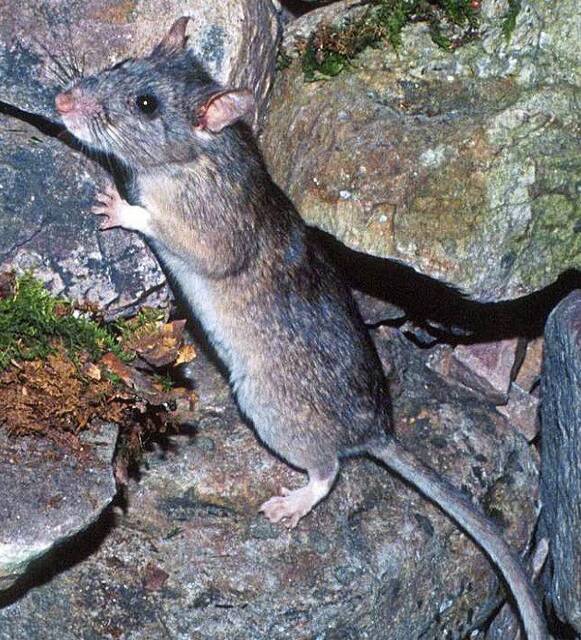Game commission partners with Maryland Zoo to boost Allegheny wood rat population
State game commission officials think Pennsylvania could use a few more rats.
But not the kind that would cause a restaurant to fail its health inspection. The rodent in question is the Allegheny wood rat, and it mostly prefers a nice big pile of rocks to a commercial kitchen.
“These are definitely not the invasive rats that stowed their way across the Atlantic,” said Mike Evitts, spokesman for the Maryland Zoo, which is partnering with the Pennsylvania Game Commission and the Wildlife Futures program at the University of Pennsylvania to breed a new population of Allegheny wood rats, which they plan to reintroduce in several areas of the state.
“Just like with a lot of wildlife, they’re losing habitat,” said commission spokesperson Travis Lau. “Their habitat is becoming more fragmented by development. Diversity in the gene pool is how wildlife populations are kept healthy. Normally they would have miles and miles of forest where rats from one colony could disperse and join another colony.”
In addition to pressure from human encroachment, Allegheny wood rat populations have also been hit hard by the loss of food sources to invasive species, a deadly roundworm parasite spread by raccoons, and increased competition for food among other native species.
“Wood rat populations have declined so much that they have become isolated from one another. That leads to low genetic diversity and eventually to inbreeding, which is yet another factor in population decline,” said Kate Otterbein, a mammal recovery specialist at the game commission.
The project’s goal is to produce a healthy captive population of wood rats that can be introduced to the wild to improve genetic diversity among remaining populations.
“In 2022 we completed a statewide survey on them for the first time since the 1980s,” Otterbein said. “We found that 70% of the Pennsylvania population has been lost. That was the main impetus behind this repopulation effort.”
First discovered in a Carlisle cave in 1858, Lau said the places Allegheny wood rats call home are not easily accessible by humans.
“When you’re driving on a mountain road and you see an area with a lot of rock piles, that’s where wood rats tend to live,” he said. “They’re elusive creatures like most small mammals, because they’re prey — those areas are also hotbeds for snake activity.”
Allegheny wood rats are distinct in appearance from the typical Norway rat, primarily because their tails are furry. They also have an appearance more like a mouse, with a gray back and white belly. The average adult is about 17 inches long, including an 8-inch tail.
Central Allegheny and central/western Westmoreland counties are home to the largest historic wood rat populations in southwestern Pennsylvania, according to commission data.
As part of the breeding program, wood rat pups will remain at the Maryland Zoo for a few weeks before being transferred to a soft-release pen where they can grow and acclimate to a more wild environment before being released.
Otterbein said people and organizations that are part of the Allegheny Wood Rat Working Group are gathering genetic data on existing populations through live trapping, and using that data to determine where the gene pool needs to be a little deeper.
“We want to start slow and build a diverse captive population,” she said. “The first wood rats to be reintroduced will be in Indiana and Pennsylvania. Generally, you don’t want to introduce more than 20% of the existing population.”
Work is also ongoing to improve habitat at wood rat sites throughout their range in the Appalachians, according to the game commission. At one time, its range extended from southwestern Connecticut west to Indiana and south to northern Alabama.
It is listed as endangered in Indiana, Ohio, Maryland, New Jersey, and New York and are considered a species of conservation concern in Pennsylvania, Virginia, Tennessee, Kentucky, North Carolina, and West Virginia.
“This captive breeding program will provide some new genes for their gene pool,” Lau said.
Patrick Varine is a TribLive reporter covering Delmont, Export and Murrysville. He is a Western Pennsylvania native and joined the Trib in 2010 after working as a reporter and editor with the former Dover Post Co. in Delaware. He can be reached at pvarine@triblive.com.
Remove the ads from your TribLIVE reading experience but still support the journalists who create the content with TribLIVE Ad-Free.


